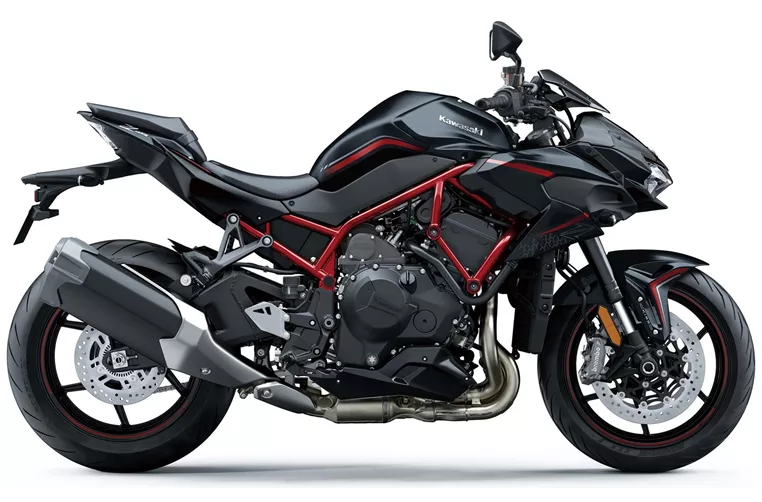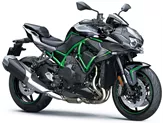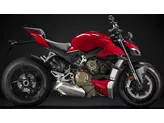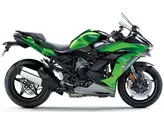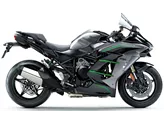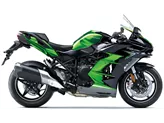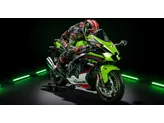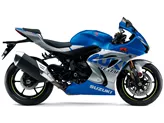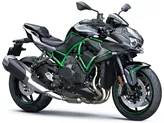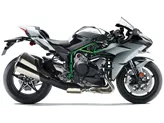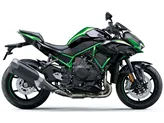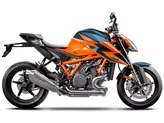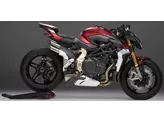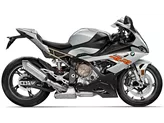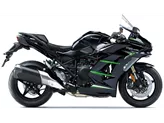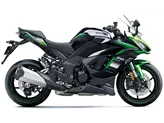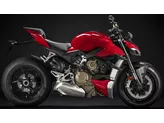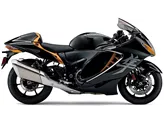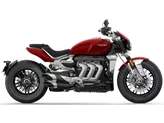Kawasaki Ninja H2 SX SE 2018 vs. Kawasaki Z H2 2020

Kawasaki Ninja H2 SX SE 2018
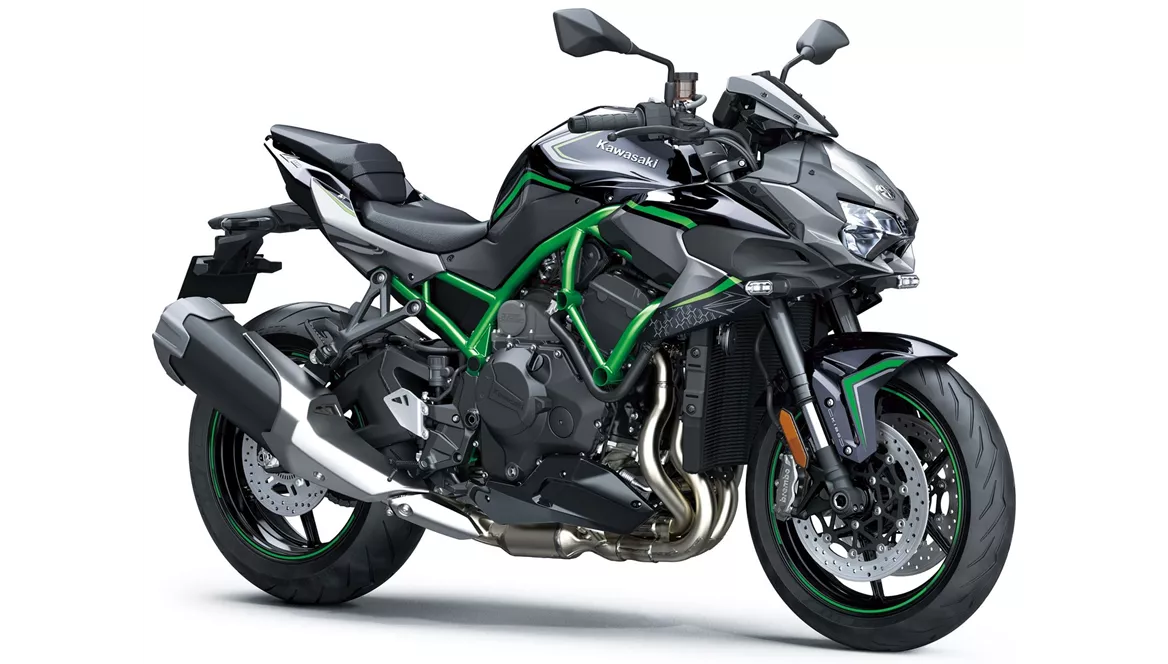
Kawasaki Z H2 2020
Overview - Kawasaki Ninja H2 SX SE 2018 vs Kawasaki Z H2 2020
The Kawasaki Ninja H2 SX SE 2018 and the Kawasaki Z H2 2020 are both powerful motorcycles with similar engine specifications. They both have an inline, liquid-cooled engine with a displacement of 998cc and produce 200 horsepower. The torque output is slightly different, with the Ninja H2 SX SE having 137.3 Nm and the Z H2 having 137 Nm.
In terms of suspension, both motorcycles feature upside-down telescopic forks at the front and a swing arm with a monoshock at the rear. The travel and adjustment options are also similar, with the Ninja H2 SX SE having a front travel of 120 mm and a rear travel of 139 mm, while the Z H2 has a front travel of 120 mm and a rear travel of 134 mm. The suspension rear material is aluminum for both models.
The braking systems on both motorcycles are also similar, with double disc brakes at the front and a diameter of 320 mm. They both have four-piston calipers and use radial monoblock technology.

Kawasaki Ninja H2 SX SE 2018
In terms of advanced rider assistance systems, both motorcycles come equipped with ABS, riding modes, and traction control. However, the Z H2 2020 offers additional features such as cornering ABS, launch control, quickshifter, and anti-wheelie control.
The dimensions and weights of the two motorcycles are also similar, with both having a front tire width of 120 mm and a rear tire width of 190 mm. The wheelbase is slightly shorter on the Z H2 at 1455 mm compared to 1480 mm on the Ninja H2 SX SE. The seat height is also slightly lower on the Z H2 at 830 mm compared to 835 mm on the Ninja H2 SX SE. The fuel tank capacity is the same for both models at 19 liters.
In terms of equipment, both motorcycles come with LED headlights. The Z H2 2020 also features LED daytime running lights and a TFT display, which are not present on the Ninja H2 SX SE.
The strengths of the Ninja H2 SX SE 2018 include its powerful engine with high torque and strong pull, excellent brakes, and stable braking performance. It also offers comfortable riding even at high speeds and high-quality driving assistance systems. Additionally, it has a service interval of 12,000 km.

Kawasaki Z H2 2020
The strengths of the Z H2 2020 include its incomparable engine with full power and easy control. It offers a pleasant seating position and high riding comfort for a naked bike. Despite its extravagant drive, it provides stable and transparent handling and can be ridden carefree in everyday life. It also has a quiet but charismatic sound.
The weaknesses of the Ninja H2 SX SE 2018 include the fiddly control of the heating handle and the lack of electronic chassis, which would be practical and suit its universal character.
The weaknesses of the Z H2 2020 include the quickshifter, which makes interventions that take too long, and the suspension strut, which becomes a bit spongy during sporty riding. Additionally, the exclusive nature of the motorcycle could benefit from exclusive components all around.
Technical Specifications Kawasaki Ninja H2 SX SE 2018 compared to Kawasaki Z H2 2020
Pros and Cons in comparison
Pros and Cons in comparison
Kawasaki Ninja H2 SX SE 2018

Kawasaki turns the H2 into a fascinating sports tourer. The H2 SX is a new motorbike and, apart from the supercharger and the striking front end, has virtually nothing in common with the fearsome H2 and H2 R. It offers great comfort and shines with the familiar and universal virtues of a sports tourer. It offers great comfort and shines with the familiar and universal virtues of a sports tourer. On top of that, you enjoy breathtaking acceleration.
Kawasaki Z H2 2020
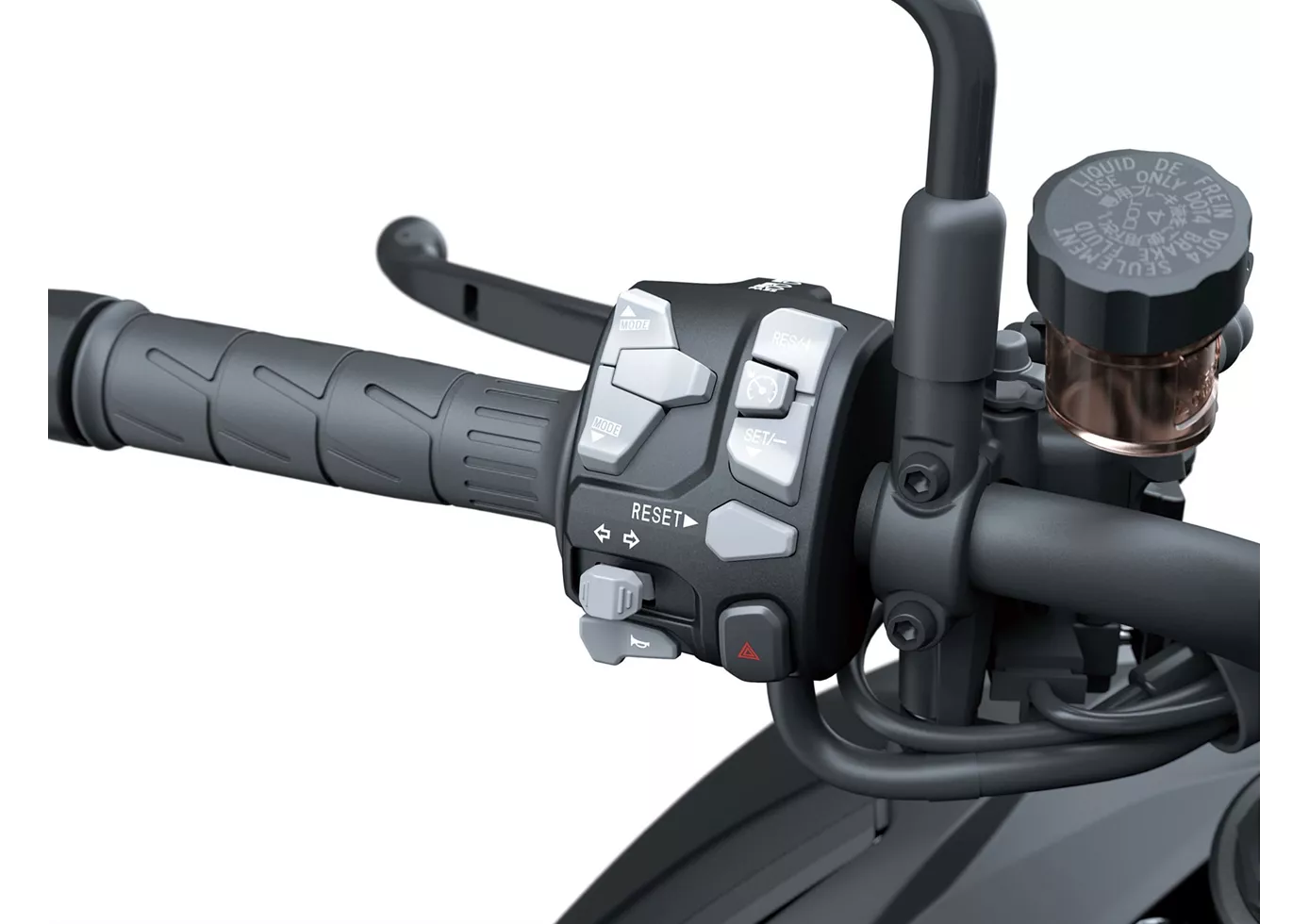
The fascinating power unit of the Kawasaki not only inspires as a motif for quartet cards or at the regulars' table. The engine is made for practical use. In the saddle of the bike, you can enjoy the thrust in every situation. Commands from the throttle are implemented directly, intensively but also controllably. However, the bike is not an athletic sportsman but a beefy naked bike. It always scores when sovereignty and power are required.
Price Comparison Avarage Market Price Kawasaki Ninja H2 SX SE vs Kawasaki Z H2
There are a few key differences between a Kawasaki Ninja H2 SX SE 2018 and a Kawasaki Z H2 2020. In terms of price, the actual average price of a Kawasaki Ninja H2 SX SE 2018 is about 30% higher. A Kawasaki Ninja H2 SX SE 2018 experiences a loss of 1,740 USD in one year of ownership. This is offset by a loss of 630 USD for a Kawasaki Z H2 2020. There are the same number of bikes of both models available on the 1000PS.de marketplace, specifically 10. It takes less time to sell a Kawasaki Z H2 with 148 days compared to 225 days for the Kawasaki Ninja H2 SX SE. Since model year 2018 1000PS.de editors have written 14 reviews for the Kawasaki Ninja H2 SX SE and 14 reviews for the Kawasaki Z H2 since model year 2020. The first review for the Kawasaki Ninja H2 SX SE was published on 11/7/2017 and now has more than 35,700 views. This compares to more than 82,500 views for the first review on Kawasaki Z H2 published on 10/10/2019.

